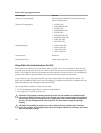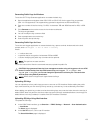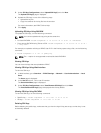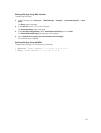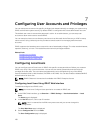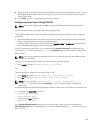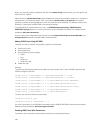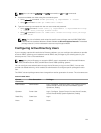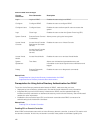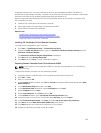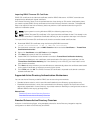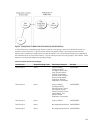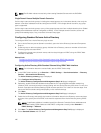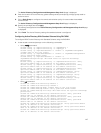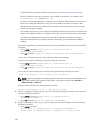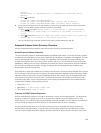
Table 13. iDRAC User Privileges
Current
Generation
Prior Generation Description
Login Login to iDRAC Enables the user to log in to iDRAC.
Configure Configure iDRAC Enables the user to configure iDRAC.
Configure Users Configure Users Enables the user to allow specific users to access the
system.
Logs Clear Logs Enables the user to clear the System Event Log (SEL).
System Control Execute Server Control
Commands
Allows power cycling the host system.
Access Virtual
Console
Access Virtual Console
Redirection (for blade
servers)
Access Virtual Console
(for rack and tower
servers)
Enables the user to run Virtual Console.
Access Virtual
Media
Access Virtual Media Enables the user to run and use Virtual Media.
System
Operations
Test Alerts Allows user initiated and generated events, and
information is sent as an asynchronous notification and
logged.
Debug Execute Diagnostic
Commands
Enables the user to run diagnostic commands.
Related Links
Prerequisites for Using Active Directory Authentication for iDRAC
Supported Active Directory Authentication Mechanisms
Prerequisites for Using Active Directory Authentication for iDRAC
To use the Active Directory authentication feature of iDRAC, make sure that you have:
• Deployed an Active Directory infrastructure. See the Microsoft website for more information.
• Integrated PKI into the Active Directory infrastructure. iDRAC uses the standard Public Key
Infrastructure (PKI) mechanism to authenticate securely into the Active Directory. See the Microsoft
website for more information.
• Enabled the Secure Socket Layer (SSL) on all domain controllers that iDRAC connects to for
authenticating to all the domain controllers.
Related Links
Enabling SSL on Domain Controller
Enabling SSL on Domain Controller
When iDRAC authenticates users with an Active Directory domain controller, it starts an SSL session with
the domain controller. At this time, the domain controller must publish a certificate signed by the
142



